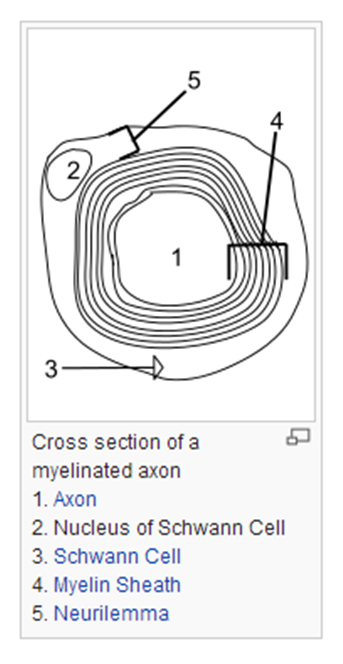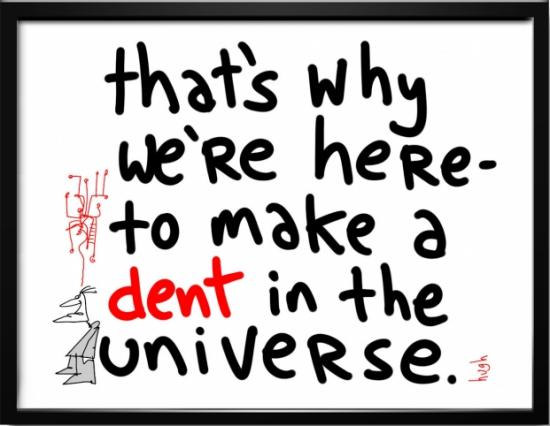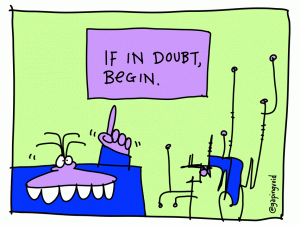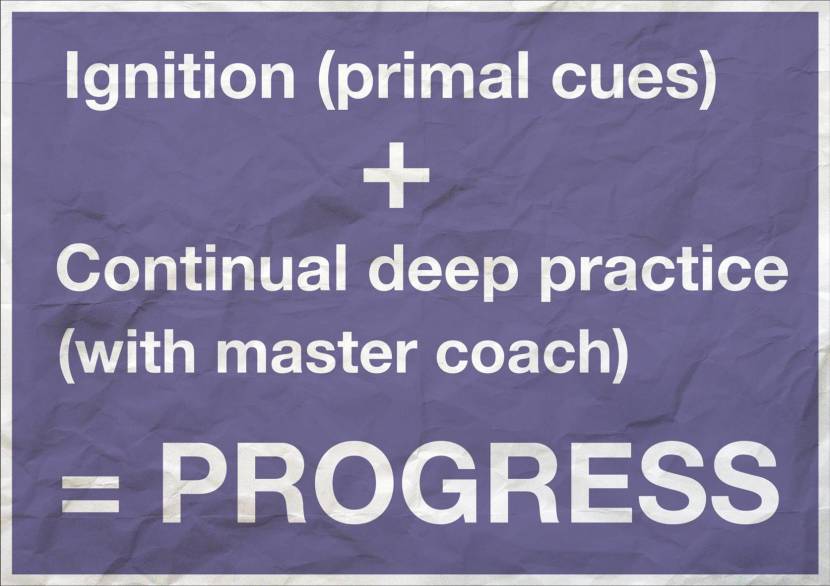Category: GCSE Computing
Knowledge organisers // New OCR GCSE Computer Science
Having used knowledge organisers with students for almost two years now, it’s always a great starting point when planning for a new specification of GCSE. Inspired by Joe Kirby’s post, knowledge organisers seek to…
Specify subject knowledge in meticulous detail.
I’ve written before about knowledge organisers (read more here).
In planning for the new GCSE Computer Science specification I’ve created a number of knowledge organisers (making use of the OCR specification booklet). Feel free to download, use, share, edit, e.t.c.
Paper 1 – Computer systems
Paper 2 – Computational thinking, programming & algorithms
*some of the topics have been combined into one knowledge organiser.
Updated GCSE Computing revision pack.
Below is a link to a GCSE Computing revision pack that i have recently updated (and simplified) which focuses on past paper exam questions.
A451 revision booklet [.pptx] [.PDF]
The booklet is split into theory topics and allows students to:
- identify gaps in knowledge before attempting questions.
- define keywords and build subject specific vocabulary.
- mind map key areas of each topic.
- attempt past paper questions by topic.
You can read more about my thoughts on revision here.
Feedback welcome!
**Also check out this great resource from @teknoteacher – GCSE Computing revision.
Here’s a video in which he explains the use of the resource – click here.
He is also running a series of free computing webinars for teachers – click here to find out more.
#TMCOOP presentation – Raising attainment at KS4.
On Thursday 22nd May I presented some ideas at #TMCOOP about how to raise attainment at KS4. Below is a summary of my presentation.
Raising attainment at KS4.
I’ve noticed in my relatively short time of being a teacher that one of the overwhelmingly strongest indicators of how well a student achieves is effort. This may sound obvious. It is. Angela Duckworth discovered this in her research on GRIT (persistant effort towards a long term goal). If we want to do well at something that’s difficult it will require a huge amount of effort. How often do students not realise this until it is too late… “I wish I’d put more effort into revising.” When I look back over the past few years and analyse why some students have performed well at KS4 and some didn’t, the main differentiator is effort.
During last two terms I have attempted to build an ‘ethic of excellence’ in my classroom. I want all students to aspire to achieve the very top grades and I want them to know it will take a huge amount effort. I also want them to know that I will match their effort by supporting them through rigorous marking and feedback. Students aren’t always the best at following instructions from adults but they can be extremely good at mimicking behaviours.
An ethic of excellence.
Having read Ron Berger’s remarkable book ‘An Ethic of Excellence’ I was motivated to get my students working their socks off. In the book Berger talks about how he spends a lot of time ensuring that the work he asks his students to do is as close to a ‘real life’ as possible. He also discusses how he built a culture in his classroom whereby students only received one of two grades for their work – ‘Excellent’ or ‘Not finished yet.’ What a powerful system. I decided to give it a try with a GCSE class that were about to start a 10 week coursework project. Target grades ranged from A to E.
High expectations.
Do target grades have an adverse effect on effort? If a student is targeted a D/E grade, is it possible that they might see that as an opportunity to adjust their effort to reflect the low target, i.e. not try very hard. To test this hypothesis I started by setting a default expectation of all students in the class: A*. Was I confident that all students would achieve this? Realistically, probably not as there are many factors out of my control (attendance being one of them). But I was confident that this strategy would help everyone achieve or exceed their target grade (something that I hadn’t managed to do in the past).
Talent isn’t born.
I spent sometime explaining to students about the David Beckham’s and Jonny Wilkinson’s of this world and how much effort they put into practising. At the beginning of most lessons we would watch a short clip that actively demonstrated how high levels of effort matched with deliberate practice can lead to very impressive results. I found the work of Daniel Coyle (and his book ‘The Talent Code’) particularly helpful in shaping my thinking around this. In his book, Coyle explains how he spent almost two years scouring the world researching groups of talented people – from teenage Brazilian football players to young musical prodigies. A recurring theme was shared amongst all these successful groups. Lots of effort coupled with deliberate practice that was guided by a master coach.
Students were beginning to understand that the more effort they put in, the more they asked for my advice, the more they thought about their work the better the chance they had at achieving an A*.
Re-drafting
This is where the effort manifested itself in the classroom. I introduced Berger’s idea of grading work as either ‘Excellent’ or ‘Not finished yet.’ Berger describes the art of re-drafting brilliantly in the video ‘Austin’s butterfly’ which is about a young boy who is asked to draw a butterfly by copying a photograph. You can see the difference in quality from the first attempt to the final attempt.
I attempted to build a culture in the classroom where it was typicality that all students would re-draft their work. Students were asked to re-draft their work several times which often led to a small incremental increase in marks between drafts but a huge difference by the time the final draft was submitted. Students also learnt to take a bit more pride in their work which appeared to come about because they had put so much effort into the redrafting that when it came time to submit a final copy they wanted it to be as close to perfect as possible.
Feedback – no grades.
The re-drafting was helped along by precise feedback in which I gave no grades. Instead I opted to simply tell students how many marks they were away from an A*. I then broke the mark scheme down into very small specific chunks which when added up would give full marks. This helped me move away from phrases like “Explain more” and enabled me to give really precise feedback to students. If a student was 15 marks from an A* they were able to tangibly see where they could add those marks to their work. With a potential A* on the line they were happy to continue to re-draft.
Impact.
I’d like to say a class full of A* grades but that was not the case. However all students did either achieve or exceed their target grade with no student scoring below a C and four students securing an A*. It wasn’t just the grades that pleased me but also the students attitudes towards their work. In class they were more focused and keen to give me work to mark. The students were proud of what they had achieved and I was extremely proud of them.
What I have described in this post is by no means an exact science and I’m certainly not telling you to change what you’re doing, but this worked for these students.
And remember… “Don’t be upset with the results you didn’t get from the work you didn’t do.” I think this applies to us all.
#neverstoplearning
GCSE Computing revision materials.
GCSE Computing revision materials.
This is a work in progress. This post will be updated regularly over the next few weeks to cover the OCR GCSE Computing syllabus. The resources can be easily adapted if needed. Feedback welcome!
Read more about the approach to revision I’m trialling here.
1. Computer Systems
Self-reflection[PDF] [.DOC] | Chunked revision booklet [PDF] [.PPT] | Multiple choice questions [PDF]
2. Hardware
Self-reflection[PDF] [.DOC] | Chunked revision booklet [PDF] [.PPT] | Multiple choice questions [PDF]
3. Software
Self-reflection[PDF] [.DOC] | Chunked revision booklet [PDF] [.PPT] | Multiple choice questions [PDF]
4. Data representation
Self-reflection[PDF] [.DOC] | Chunked revision booklet [PDF] [.PPT] | Multiple choice questions [PDF]
5. Databases
Self-reflection[PDF] [.DOC] | Chunked revision booklet [PDF] [.PPT] | Multiple choice questions [PDF]
6. Networks
Self-reflection[PDF] [.DOC] | Chunked revision booklet [PDF] [.PPT] | Multiple choice questions [PDF]
7. Programming:
Self-reflection[PDF] [.DOC] | Chunked revision booklet [PDF] [.PPT] | Multiple choice questions [PDF]
#neverstoplearning
Increasing bandwidth – Planning a revision session.
Talent isn’t born. It’s made.
In Daniel Coyle’s book ‘The Talent Code’ he travels the world to seek out groups of very successful people and in an attempt to discover why they are so successful. Through his observations of multiple different groups from musicians to football players he noticed one recurring trend – deep practice. In fact he has created an equation that summarises the elements needed to make progress and succeed at something. It looks like this…
Ignition or primal cues relates to the motivation a person has to be successful in the first place. As a teacher I believe it’s part of my job to talk to students about what motivates them to succeed. Some students are able to easily articulate this. whereas some will need some help finding the reason why they need to be successful. Either way I need to support the students I teach in understanding their ignition to succeed.
Continual deep practice is about increasing the amount of myelin in the brain*. Have a look at this great interactive guide to Myelin on Daniel Coyle’s website. Myelin is…
Myelin is a lipid and protein sheath-like material that forms an insulating cover that surrounds and protects nerve fibres.

Structure of a typical neuron from http://en.wikipedia.org/wiki/Myelin
The general idea is that the more myelin you have insulating your nerve fibres, the faster impulses (or information) can travel between nerve cells. Some scientists believe that myelin can be increased with regular deliberate practice. It’s similar to bandwidth in the speed of an internet connection. The more bandwidth you have the faster the transfer of data. The more practice you put in, the more the myelin wraps around the nerve fibre increasing the bandwidth (the diagram below shows this in a bit more detail). It’s worth noting that this works both ways and needs to be maintained with regular practice.

Cross section of a myelinated axon taken from http://en.wikipedia.org/wiki/Myelin
Daniel Coyle uses the example of Brazilian soccer players to explain deep practice in action. From an early age they play a game called Futsal and they continue to play it into their teenage years. Futsal is played on smaller court with a smaller ball which means that players will touch the ball more often than playing 11 a side on a full size pitch. This is deep practice. It’s quality controlled by a master coach (someone with expert knowledge of the game / subject) who intervenes with striking impact to ensure learning is meaningful. The video below examines more examples of where deep practice has produced successful outcomes.
How does this apply to revision?
If we want students to be successful in exams then they need to practice – sounds simple enough, but is not entirely true. If we want students to be successful they have to fine tune their practice so that it is deep, deliberate and regular in order to build up a thicker insulation of myelin. What follows are few strategies that I am currently trialling to achieve this.
1) Regular self assessment with input from the teacher.
It’s important to let students assess their own strengths and weaknesses when it comes to a topic to revise. Teachers are the master coaches described in ‘The Talent Code.’ We have to know our students well and track their learning and use this information to intervene with self assessments so that students know what they are actually good at and areas that they need to improve. The key to good revision (I believe) is to focus more time on the weaker areas (being deliberate) rather than spending lots of time revisiting knowledge/skills that a student is already competent in. Below is an example of a self-assessment I have used with students. The black ‘X’ represents the student response. The green Y’s represent my response based upon prior testing and my knowledge of the students competencies through questioning and classwork. If I have agreed with the students response I have not added an additional symbol.
The grid provides a clarity. Students get validation for what they think they already know or an opportunity to discuss area for improvements. It also helps students to focus in on the weaker areas and thus provides a starting point for revision.
2) Chunking information.
Once students have self assessed their strengths and weaknesses and they have been agreed, they can then begin revising required knowledge. In order to not overload the students working memory I have created a resource that chunks the information down in smaller sub-topics (see the list on the self reflection diagram above). Each sub topic has a series of questions that students answer in an open book environment. Example answers to these sections are released to students once they have attempted to answer them. They also have access to past paper exam questions and answers. Students are free to work through this revision pack using the self assessment as a rudder to guide them towards topics that will require more attention.
3) Regular rigorous multiple choice tests.
The ‘chunked’ revision materials are sync with a multiple choice test. I have created the tests using Joe Kirby’s brilliant posts on designing rigorous multiple choice tests (Post 1 | Post 2). I’ve attempted to increase rigor by adding more incorrect answers that are based on common student misconceptions.
The tests can be taken multiple times and using a platform like Edmodo means the tests are also tracked and scored without the teacher lifting a finger. Edmodo also allows students to go back through the test and see where they dropped marks.
A key element here is frequency and over a 6 week revision period it’s important to space the timing of these multiple choice tests to aid retention. As Joe points out in his most recent post on curriculum design,
Repeated retrieval improves long term retention: frequent quizzing prevents forgetting.
Read more about this here at Joe’s blog.
4) Regular ‘Walking – Talking’ mock exams.
One new strategy that has been trialled at my school this year has been ‘walking-talking’ mocks in all subjects. For those not familiar here’s how they work. The students revise for a mock as normal. When the mock exam takes place the teacher walks them through the first question and then gives students an appropriate amount of time (depending on the number of marks available usually) to complete the question and then get some instant feedback on how well they did. It’s hard to judge the real impact of doing this exercise but it certainly helps students feel more comfortable in exam conditions. I know I have been guilty in the past of running a mock exam in ‘exam conditions’, students tend to score poorly on it, get feedback but didn’t get an opportunity to re-draft answers (my fault) and the whole scenario was demotivating and not very productive. A walking-talking mock provide students to feel success in an exam environment. This new found motivation can then be used to drive revision sessions. As the year goes the strategy is to get students to sit 3-4 mock exams and by the end of the process provide them with less and less support as their confidence grows.
This post is by no means a ‘you should run revision sessions like this’ post. It’s a reflection on some of the ideas that have inspired my thoughts around how to do revision better. It is very much a work in progress and feedback is very much welcome!
I often tell my students to not be upset with the results they didn’t get from the work they didn’t do. I feel the same and care deeply about their results. When my students walk into the their exam I want to make sure I’ve done everything within my power to ensure they succeed.

Image via @gapingvoid – http://gapingvoid.com/
Further reading:
Myelin – by Daniel Coyle
How to grow a super athlete – by Dainel Coyle
The myelin in all of us – by David Shenk
Why use multiple choice tests – by Joe Kirby
How to design multiple-choice questions – by Joe Kirby
Research on multiple-choice questions – by Daisy Christodoulou
Walking, talking mocks: are mock exams the way forward? – by Martin Jones
Hardwiring learning and effort = success – by Domini Choudhury
*I am not a scientist. For more information on myelin please see this interactive guide or even better still, read Daniel Coyle’s book ‘The Talent Code.
#neverstoplearning












